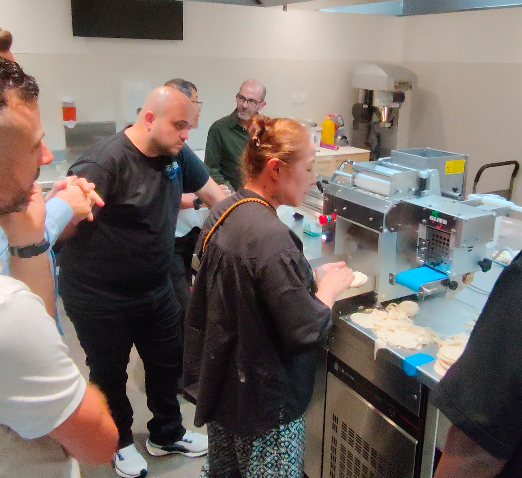The integration of automated machines in a traditional Japanese restaurant represents much more than a simple change of equipment. It's a real cultural transformation that requires a lot of hard work. training your staff. How do you combine modern automation with the age-old heritage of Japanese culinary craftsmanship? Here's a complete guide to making the transition successfully, while preserving the authenticity of your establishment.
The challenges of respectful modernisation
L'automation can give rise to legitimate concerns among your employees, who may fear being replaced or seeing their job devalued. These concerns are natural and reflect an attachment to their know-how and professional status.
The main fears identified are
- Fear that the profession will be devalued
- Apprehension about technology
- Questioning their identity around their role
The key to success lies in communication and transparency. The aim of automation is not to replace cooks, but to support by freeing them from repetitive tasks. The aim is to enable them to concentrate on high value-added, more creative and rewarding tasks. Automation transforms jobs without making them disappear.
A 4-phase training methodology
Phase 1: Raising awareness and getting people on board
Even before training your teams, it is essential to raise awareness and sign up to the automation project. A convinced employee will be much more motivated to train.
Don't just install the machines: take the time to explain them to your customers. benefits automation. Present testimonials of establishments that have taken the plunge, show videos of demonstration and highlight the benefits concrete impact on working conditions: reduction in musculoskeletal disorders (MSDs), reduction in repetitive movements, improved organisation, etc.
Phase 2: Technical training for teams
La technical training is essential to enable your teams to get to grips with the equipment without stress. Organise demonstrations, guided handling sessions and favour a gradual approach.
You can start with training during off-peak hours, with small quantities of preparation, to make it easier to get the hang of. Then gradually increase the volumes and introduce the use of the machines during the daily service. This natural progression is helping to build staff confidence and involvement in this transition.

Phase 3: Combining know-how
Once the teams have been formed, it is important to develop an approach hybridcombining traditional craftsmanship with modern technology. Create new revenues that combine manual work and automation, innovate with new formats or assemblies, and develop quality control workstations to monitor automated production.
It is still essential to preserve certain preparations 100 % manualThis is particularly important for special orders or key moments in the service. Thanks to theautomationWith this new concept, chefs can showcase their expertise in dressmaking, culinary creativity, recipe inventiveness and customer service quality.
Phase 4: Long-term support
Training doesn't stop after the first few days. To ensure the successful integration of theautomationIt is essential to maintain a ongoing support :
- Regular training to new functions
- Follow-up good housekeeping practices
- Update knowledge in line with technological developments
This dynamic encourages sustainable skills development and the full appropriation of automated tools.
Mistakes to avoid
Certain mistakes are common when automating a restaurant. Here are the ones to be avoided:
- Imposing machines without listening to the doubts and questions of teams
- Neglecting training, even for the most experienced employees Sushi is not the same as automated equipment: mastering sushi by hand is no guarantee of mastering automated equipment.
- Forgetting to train teams in machine upkeep and maintenanceThis can have an impact on their long-term performance.
Enhanced craftsmanship
L'automation in Japanese gastronomy does not mean the end of craftsmanship, but rather its enhancement. Your employees become augmented cooksThey are able to produce with optimum regularity while retaining their creativity.
La training is not just a technical step: it's an opportunity to redefine the culinary excellence of your establishment together. By respecting fears, valuing skills and creating new areas for expression, you can transform modernisation into a genuine lever for collective growth.
Are you ready to support your teams in this development? The Sushi Robots experts are on hand to carry out a personalised assessment of your training needs.

